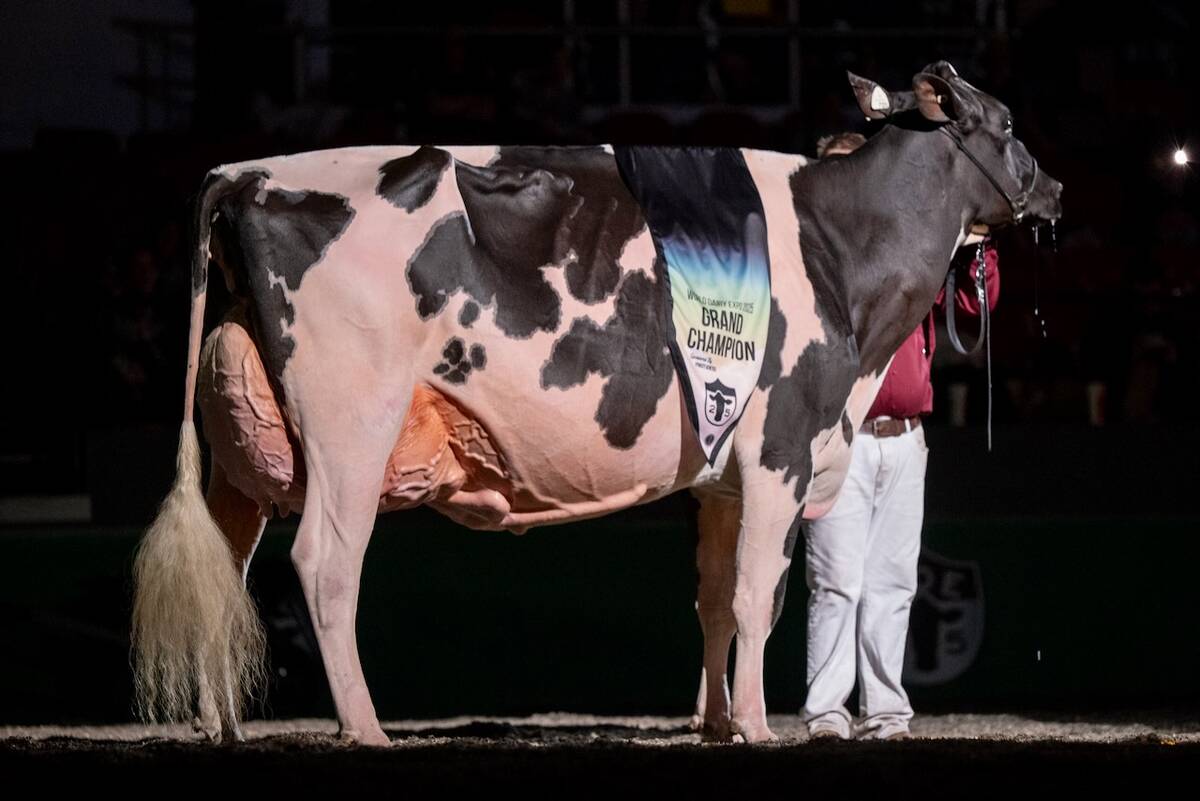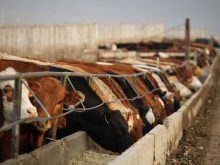A draft bylaw that proposes a slowdown on intensive livestock operations in designated areas of the County of Lethbridge is being taken to the public.
The southern Alberta municipality dubbed Feedlot Alley, has the highest concentration of intensive livestock in Canada and received national attention because of reports about the tonnes of manure produced annually by the million cattle, hogs and chickens raised there. Manure has been blamed for poor water quality in the area.
County manager Lane Johnson said first reading of the bill, which was tabled March 2, might not happen until May because the bylaw needs public comment. The document is expected to be circulated during two open houses held in Coaldale on April 6 and Picture Butte April 7.
Read Also

Canadian-bred cow wins World Dairy Expo Holstein show
A cow bred in Saskatchewan, Lovhill Sidekick Kandy Cane, is the Grand Champion Holstein at the 2025 World Dairy Expo.
“The headlines have led people to believe this is a done deal,” Johnson said.
The rewrite is required by the province and all municipalities must revise their land-use bylaws before this fall.
The bylaw proposes creating two agricultural land-use districts.
Agriculture now falls under one designation. The county may decide to zone land two different ways. One type of land-use district would permit further development while the other would prevent it.
The designations would depend on current livestock concentrations in a district, proximity to water bodies, as well as the level of urban or country residential development nearby.
Where there is already a high concentration of development such as around Picture Butte or Iron Springs, no further building or expansion would likely be allowed, said Johnson.
Further intensive livestock development was not halted because there are other areas in the county where new farms could locate, said Johnson.
There are also plans to include further requirements for manure management in the bylaw.
The Chinook Health Region has focussed its attention on the county for some time.
Paul Hasselback, chief medical officer for the health region, has not seen the draft bylaw and declined comment.
“It sounds like the County of Lethbridge is taking seriously the concerns that have been expressed and are developing a plan that addresses those concerns,” said Hasselback.
The health region has jurisdiction over a large corner of southwestern Alberta. It monitors municipalities’ land-use bylaws if there is a public health impact due to high concentrations of intensive livestock operations or other causes. It covers the Municipal Districts of Taber and Willow Creek and County of Warner where expansion is also ongoing.
Leighton Kolk, who feeds 12,000 cattle a year at Iron Springs, has been monitoring the bylaw as well. His family also has a poultry operation.
He is worried about a kneejerk reaction to intensive livestock operations.
“To a certain extent, they are saying we are closed for business,” he said.
He said there is a lot of misinformation about what is going on in the county.
Expansion is part of doing business, he said. If restrictions are imposed he is worried emotions could override scientific evidence about the safe use of manure.
Picture Butte is the hot spot in the province where emotions have run high, said Bernie Kotelko, past-president of the Alberta Cattle Feeders Association. He is a partner in a 25,000 head feedlot at Vegreville.
“We are in agriculture and we are producing food so it’s important that we come across as doing what is right,” he said.
“For the smaller fellow who wants to expand he may be forced to go to a whole new area, which he may not be able to afford to do,” said Kotelko.
The county is wise to encourage development in other parts of the municipality where it is less crowded because there are dryland areas that need manure as a soil additive, he said.
The province, with industry help, is rewriting the code of practice for the safe handling of manure and will include requirements for soil testing for phosphorus overloading.
The province has also promised new regulations governing intensive livestock operations.
The new code remains voluntary and municipalities may chose whether or not to adopt it as part of their land use bylaw, said Kotelko.















